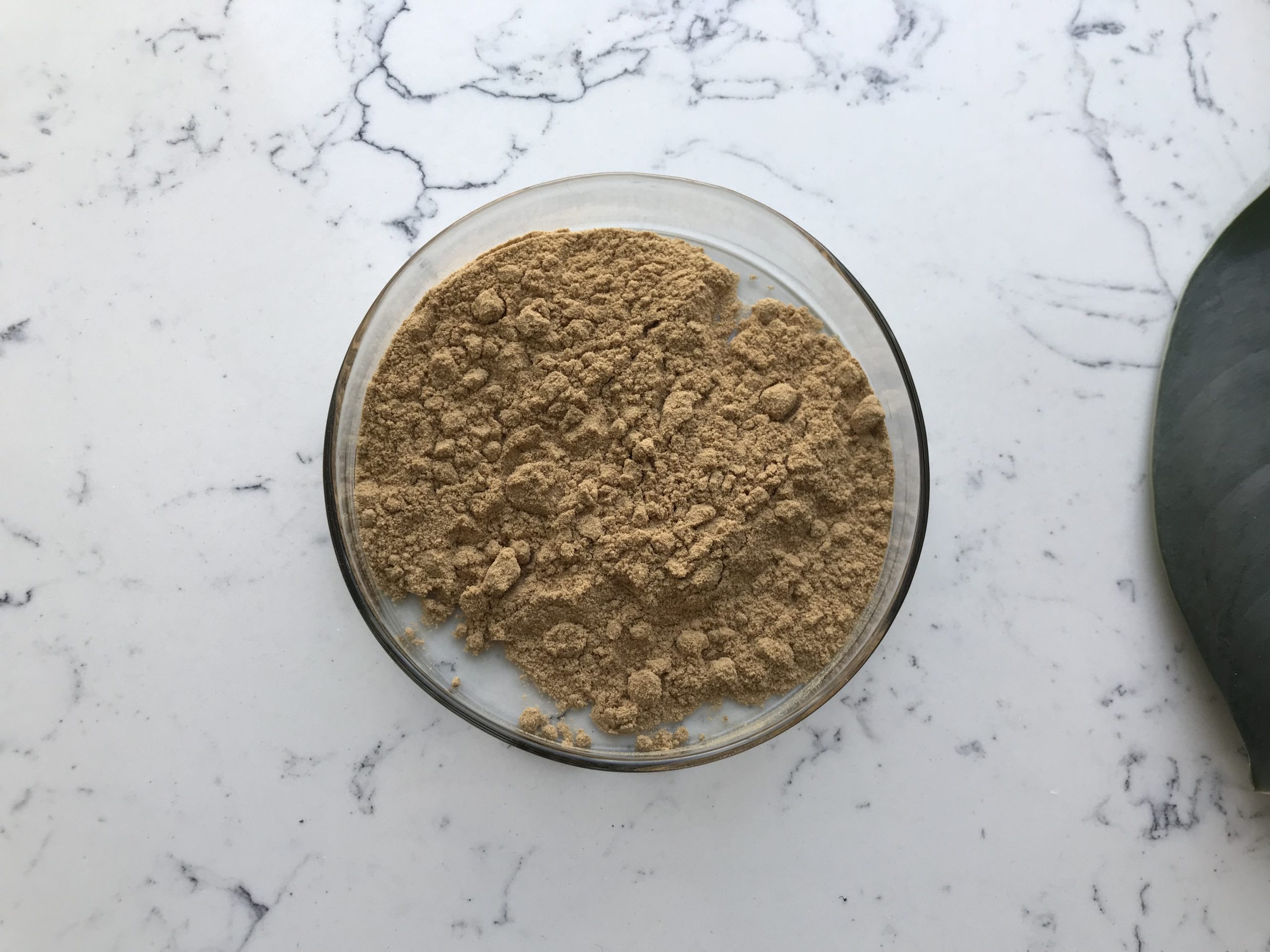Kava Extract is derived from the root of the Piper methysticum plant, native to the South Pacific. It’s known for its psychoactive properties and has been used traditionally to promote relaxation, reduce anxiety, and enhance social interaction. Here’s an overview of its use and synthesis:
Uses of Kava Extract:
- Anxiolytic (Anti-Anxiety) Effects: Kava is commonly used to help manage anxiety and stress. It has a calming effect on the central nervous system, and research suggests that its active compounds, primarily kavalactones, interact with neurotransmitters to induce relaxation without causing sedation.
- Mood Enhancement: Regular use can contribute to an improved mood, and some studies indicate that it can help with mild to moderate depression. However, it does not produce the “euphoric” effects that more potent psychoactive substances might cause.
- Cognitive Enhancement: Although Kava is primarily used for its anxiolytic effects, some users report mild cognitive enhancement, improved focus, and alertness, especially in high-stress situations.
- Muscle Relaxation and Pain Relief: It’s also been used for its mild muscle-relaxing effects and can sometimes alleviate discomfort associated with muscle tension.
- Sleep Aid: Kava can promote deeper, more restful sleep by calming the nervous system. However, it is not typically considered a sedative in the way that sleep medications are.
- Cultural and Social Uses: In many Pacific Island cultures, Kava is used in ceremonial settings, especially as part of social rituals or traditional medicine. It’s consumed in a drink form, often as part of a communal experience.

Synthesis of Kava Extract:
The active compounds in Kava are known as kavalactones, of which there are six primary types:
- Dihydrokavain (DHK)
- Methysticin
- Dihydromethysticin (DHM)
- Kavain
- Yangonin
- Desmethoxyyangonin
These compounds are primarily responsible for Kava’s therapeutic effects.
The process of extracting Kava involves several steps, typically focused on isolating the kavalactones:
- Harvesting: Kava roots are harvested, usually from mature plants that are at least 3-5 years old, as this is when the root contains the highest concentration of active compounds.
- Drying and Grinding: The roots are cleaned, peeled, and dried, then ground into a fine powder. In some methods, the fresh roots may be used, depending on the desired potency of the extract.
- Solvent Extraction: The powdered root is typically subjected to solvent extraction, where solvents like ethanol or acetone are used to extract the kavalactones. The extract may be concentrated to increase the potency of the kava extract. The solvent is then evaporated, leaving behind the concentrated kavalactones.
- Purification: The extract may undergo additional purification steps, including filtration and chromatography, to isolate specific kavalactones or remove undesirable components.
- Standardization: To ensure consistency and potency, kava extracts are often standardized to a specific percentage of kavalactones. This ensures that each batch of extract provides consistent effects.
- Formulation: Kava extract is then formulated into various products, such as capsules, tablets, powders, teas, and tinctures. The formulation will vary depending on the intended use and target market.
Kava Extract Dosage and Administration:
- For Anxiety and Stress: Doses of 70-250 mg of kavalactones per day are commonly used.
- For Sleep and Relaxation: A dose in the range of 100-250 mg of kavalactones, taken about 30-60 minutes before sleep.
- For Cognitive Enhancement: Smaller doses (e.g., 50-100 mg of kavalactones) may be taken.

Safety and Side Effects of Kava Extract:
Kava is generally considered safe when used as directed, but there are some safety concerns to be aware of:
- Liver toxicity: There have been reports of liver damage associated with long-term or excessive Kava use, though this risk is debated. Using high-quality, properly processed kava extracts and avoiding prolonged use may mitigate these risks.
- Sedation: In high doses, Kava can cause drowsiness, so it should not be combined with alcohol or other sedatives.
- Skin issues: Chronic use has been linked to a condition called kava dermopathy, a reversible skin rash that can occur with long-term, high-dose use.
Conclusion:
Kava extract is a valuable tool for those seeking relief from anxiety, stress, and sleep issues, with its psychoactive compounds, kavalactones, providing a non-habit-forming alternative to more conventional treatments. However, like any supplement, it’s important to use Kava extract responsibly and be aware of potential side effects. If used appropriately, it can be a helpful addition to a wellness routine.
